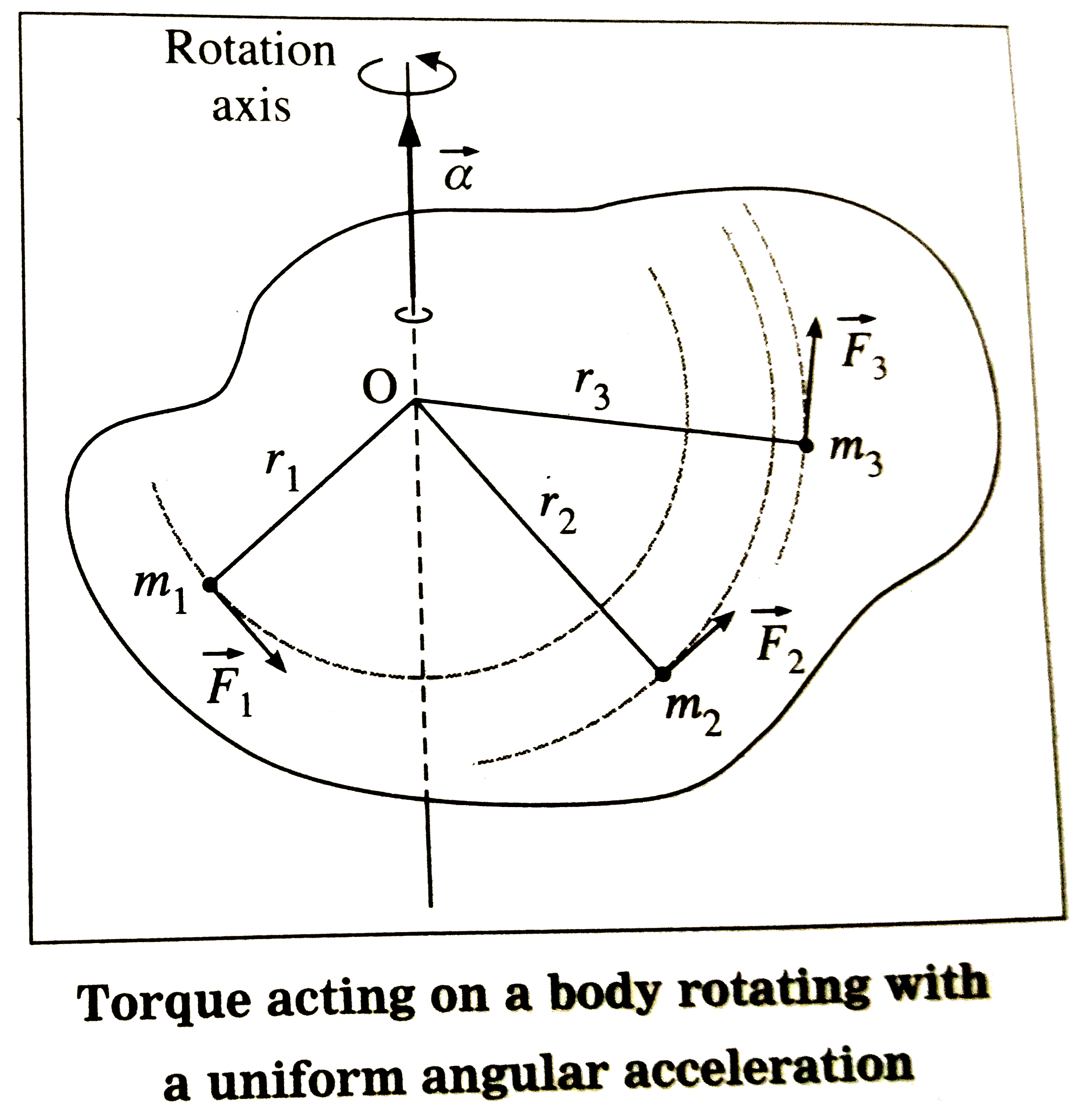Torque acting on a rotating body
Video Solution
Text Solution
A torque on a body produces angular acceleration. Consider a rigid body rotatin about an axis passing through the point O and perpendicular to the plane of the figure. Suppose that a torque on the body produces uniform angular acceleration along the axis of rotation.
The body can be considered as made of N particles with masses respectively from the axis of rotaion. is the same for all the particles as the body is rigid. Let be the external forces on the particles.
the torque on the particle of mass is .
where is the smaller of the two angles between
and (since, in this case,
Now,
Similarly ,
The total torque on the body is
where is hte moment of inertia of the body about the axis of roataion.
In vector form
This gives the requuired relation. Angular acceleration has the same direction s the torque adn both of them are along the rotation axis.

|
Topper's Solved these Questions
- DERIVATIONS-IBook:NAVNEET PUBLICATION - MAHARASHTRA BOARDChapter:DERIVATIONS-IExercise:Oscillations
Explore 5 Videos
- DERIVATIONS-IBook:NAVNEET PUBLICATION - MAHARASHTRA BOARDChapter:DERIVATIONS-IExercise:Elasticity
Explore 2 Videos
- DERIVATIONS-IBook:NAVNEET PUBLICATION - MAHARASHTRA BOARDChapter:DERIVATIONS-IExercise:Gravitation
Explore 7 Videos
- DEFINITIONSBook:NAVNEET PUBLICATION - MAHARASHTRA BOARDChapter:DEFINITIONSExercise:COMMUNICATION SYSTEMS
Explore 3 Videos
- DERIVATIONS-IIBook:NAVNEET PUBLICATION - MAHARASHTRA BOARDChapter:DERIVATIONS-IIExercise:Assignments
Explore 9 Videos
Similar Questions
Knowledge Check
If the torque acting on a rigid body, under the application of a force, is zero then it's
Alinear momentum is conservedBangular momentum is not conservedCenergy is conservedDangular momentum is conservedIf the torque acting on a rigid body, under the application of a force, is zero then it's
Alinear momentum is conservedBangular momentum is not conservedCenergy is conservedDangular momentum is conservedA torque of 50 Nm acts on a rotating body for 5 s. Its angular momentum is
Aincreases by 250 kg m2/sBincreases by 10 kg m2/sCincreases by 55 kg m2/sDdecreases by 250 kg m2/s
What is the torque acting on a body moving with constant angular velocity ?
View SolutionWhen same torque acts on two rotating rigid bodies to stop them, which have same angular momentum,
View SolutionThe torque acting on a body is the rotational analogue of
View SolutionThe angular momentum of a rotating body changes from A0 to 4A0 in 4 min. The torque acting on the body is
View SolutionA force →F=4ˆi−10ˆj acts on a body at a point having position vector −5ˆi−3ˆj relative to origin of co-ordinates on the axis of rotation. The torque acting on the body is
View Solution

